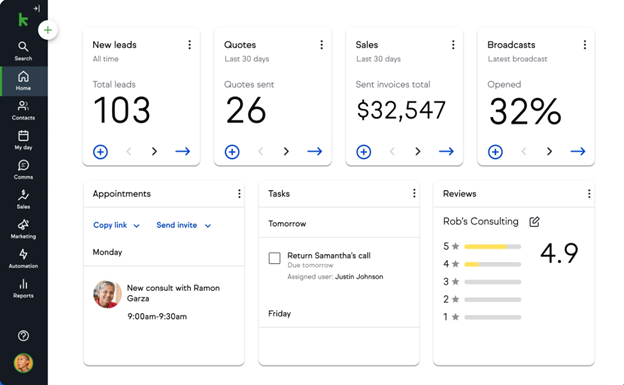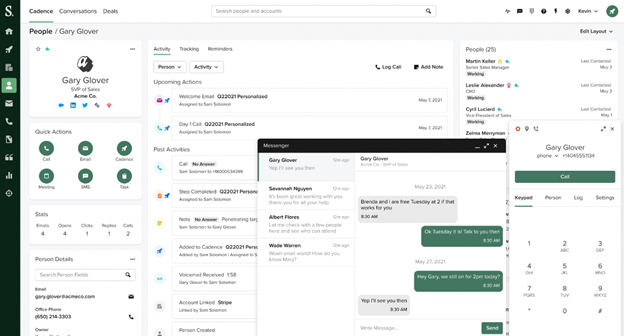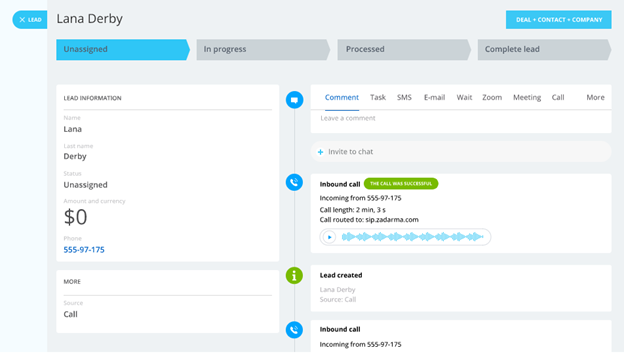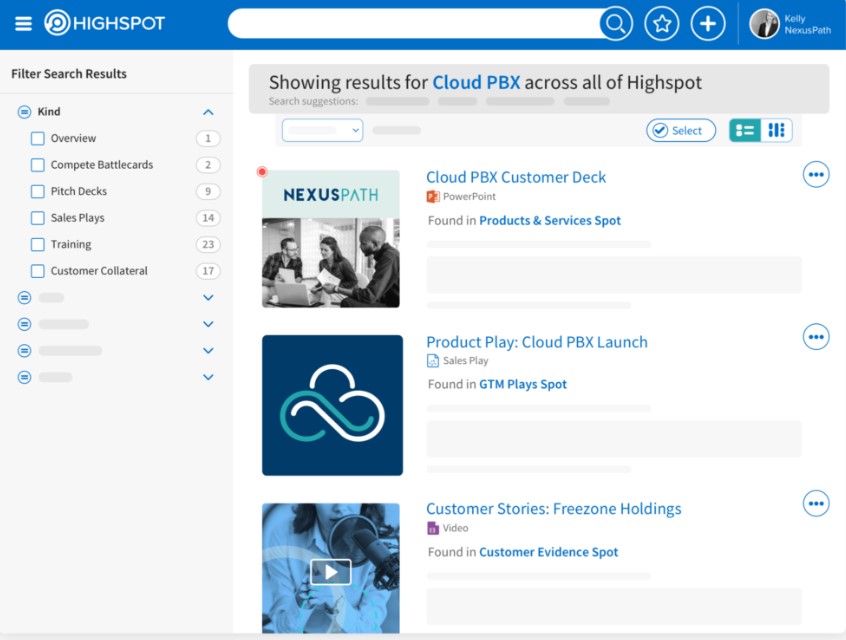
How to Build a Sales Enablement Strategy
Sales enablement can be defined as the practice of assisting in selling more effectively by leveraging tools, tactics, expertise, and resources. Usually, to develop the strategy, the organization's sales, marketing, and other departments work together.
In comparison to B2C online shops, where performance can be enhanced with e-commerce conversion optimization tips, B2B companies need a complex strategy to improve sales. Strategy planning can include different activities, from preparing working process descriptions to implementing customer journey research and integrating useful tools. Read on to learn the most vital stages of every sales enablement strategy creation.
Why Do You Need a Sales Enablement Strategy?
According to Spotio, 42% of sales reps think they don't have enough data before making a call. Without the proper knowledge and resources, any sales team is likely to face difficulties. Sellers receive multiple questions during the calls. Therefore, they need quick access to internal resources, information about the goods they are offering, and knowledge about their prospective clients. Sales managers should also know how salespeople use the information and which sources produce the best outcomes. This is where a sales enablement strategy comes into play.
Guide to Building a Sales Enablement Strategy
Don't rush into creating guidelines or scripts for your sales reps. A sales enablement strategy requires a comprehensive approach and the involvement of different specialists. Here are the vital steps you need to take while building one.
Determine the Objectives
Although the final goal is always to sell more, you need to plan some steps that will lead to it, like eliminating manual or unnecessary work, speeding up processes, producing valuable materials, etc.
- Set specific deadlines, such as when the plan should be shown to the team or how frequently the sales enablement resources provided by the company should be checked.
- Establish benchmarks and monitor the effectiveness of your sales enablement initiatives as time goes on.
- Keep an eye on typical sales enablement KPIs like productivity, quota achievement, and lead quality. They will help you establish future goals and gradually enhance your performance.
Consult Sales Reps
By discussing sales enablement with your reps, you may find out what problems they face, what tasks take the most time, and what you can do to support them where they are struggling.
Sales reps should have a deciding vote here.
However, there are other people you should talk to. Account managers, marketing specialists, sales operations, and customer support representatives should all have their perspectives heard. They can give information that sales representatives don't have.

Understand Your Customers
It's vital to understand both the general sales pipeline and your target customer’s unique journey as they approach your goods. Analyze clients' actions and purchasing triggers to learn what they need and when they need it. Among the factors you need to consider are:
- Buying process: the path a customer takes before the purchase.
- Customer path: what a person does at each stage of the buying process, who they discuss the purchase with, what questions they have, etc.
- Pain points: at what stage might the customer feel concerned and why.
- Solutions: potential address to customers' pain points and concerns.
Organize All the Necessary Content
Of course, there is a ton of valuable information that might assist representatives in establishing expertise and developing rapport. However, many salespeople need help with how to use or where to get such material. You'll be able to create, organize, and update the knowledge base with the aid of cloud services or CRM systems.
With contact information, campaign activity records, and other helpful information at hand, salespeople may spend their time engaging with potential customers more productively. That is why sales reps must keep track of and store this data for future encounters. Among the assets that can be prepared are:
- Pre-filled templates for proposals and contracts that may be customized or altered based on the needs of the sales representatives. These papers also produce consistent branding and messaging, facilitating the authority and identity of your brand.
- Important information about your product, consumers, and competitors. They could appear as text, images, infographics, etc. They assist you in informing clients about how you stand out from the competition, why they should select you, your key advantages and results, etc.
- Surveys results and responses to short questionnaires may provide detailed information on how customers feel about your goods, customer service, and overall shopping experience.
Prepare the Training
Sales enablement training enhances knowledge of the products, skills to collaborate and coordinate with marketing tactics, and understanding various CRMs and other technologies.
Apart from that, It's crucial to show how useful the available tools are since salespeople will only want to utilize them if they see their value. This is why it's critical to introduce new sellers to your team's tech stack throughout the onboarding process. Furthermore, senior team members may feel unconfident using these tools, particularly when plans change, procedures alter, and new information becomes available; hence they require continual training.
Ideally, the training should be organized every 3-4 months to keep the sales specialists in the loop of updates and constantly refresh their knowledge. Every single sales rep should be trained to acquire the same skills. It guarantees that everyone deals with clients in the same way according to your company's policy.
Integrate the Necessary Tools
After the strategy is ready, it's time to look for the tools to implement it in the best possible way. Sales reps may benefit from using various solutions:
- CRMs. As mentioned earlier, sales teams require a centralized source of information for buyers' contact information, sales opportunities, and customer journey management. Marketing teams need the same for lead-gen tasks, including customer segmentation or campaign execution.
The typical business creates many sales, marketing, and customer support data. Customer relationships and interactions are managed and organized by a CRM for a business. CRMs can do much more than that, including serving as the integration anchor for other sales enablement tools in your tech stack and evaluating crucial customer data and results via reports. Among the popular tools in the category are Salesforce, HubSpot, Keap, and Nextiva.

- Sales engagement tools. Platforms for sales engagement control, monitor, and improve how sellers interact with their clients.
They scale and streamline all customer service representatives’ interactions with prospects via phone, email, social media, etc. They also offer actionable data that identifies the most efficient methods of outreach. As a result, sales teams can acquire more target accounts in less time.
For instance, sales development representatives could utilize a sales engagement platform to create email templates. These templates could be delivered automatically to big pools of prospects if a company had just announced a new product. The programs also enable sales representatives to monitor email click- and open-through rates and duplicate the most successful templates for further usage. Examples of such tools are Mailshake, Clearbit, and SalesLoft.

- Sales management tools. The tools assist sales reps in managing the teams they supervise by monitoring KPIs and activity levels and increasing the forecast accuracy of the sales pipeline.
These technologies provide user-friendly, real-time dashboards that transform unprocessed data into useful information on the performance of both individual reps and teams. The tools also use AI to forecast quarterly sales success and suggest actions to take in relation to particular sales possibilities.
For instance, what are the chances of a contract closing? Have your teams secured enough deals to meet their quarterly or annual targets? At what stage of the buyer's journey are the major prospects? You can get the answers you need with a sales management solution. Some of these tools are Bitrix24, Taimer, Salesflare, and VanillaSoft.

- Content management tools. Technology for sales content management aids businesses in organizing, discovering, and promoting the best sales assets. This involves assisting reps in utilizing material efficiently, determining which content is most appropriate in a particular circumstance, and monitoring how prospects and clients interact with content.
A sales content management tool helps group content into categories pertinent to sales enablement, such as product details, messaging principles, customer success stories, etc. You could also make the content easily searchable and add descriptions to aid reps in using the content.
They also allow the company to assign rights to any asset in the portal, ensuring that your reps only use content that has been vetted, verified, and adheres to your brand. Among the outstanding tools in the category are Highspot, Bloomfire, and Showpad Content.

Analyze and Optimize
Every sales enablement plan should be reviewed regularly. Your strategy should evolve and change as you engage new tools, launch new processes, and create materials. The review might be carried out monthly or quarterly to assess how your strategy is doing concerning the objectives and KPIs you set. Among the KPIs that sales reps should consider are the following:
- Client engagement
- Employee satisfaction
- Sales cycle length
- Customer acquisition rate
- Average response time
- Percentage of leads at each lifecycle stage
- The average length of the customer lifecycle
- Cost per lead
- Cost per acquisition
- Customer retention rate
- Customer lifetime value
Final Word
According to the 2019 State of Sales Enablement report by Sales Enablement PRO, organizations employing an effective sales enablement strategy hit their quotas 35% more often than those without one. So there are no reasons to hesitate about whether a sales enablement strategy is worth your power and resources.
It'll lead to fruitful results, improve your sales reps' performance, and increase the company's revenue. And with this guide, you'll be able to integrate the strategy efficiently and with minimum fuss.
Art Malkovich
CEO and Co-Founding Partner, Onilab
Connect with him on LinkedIn

